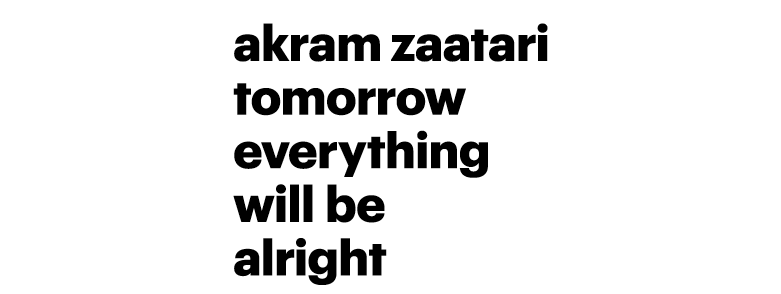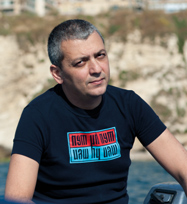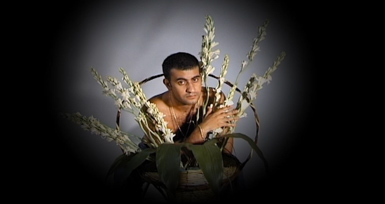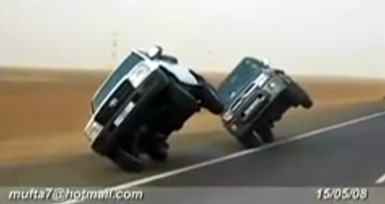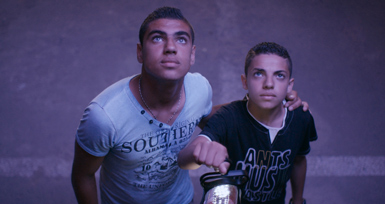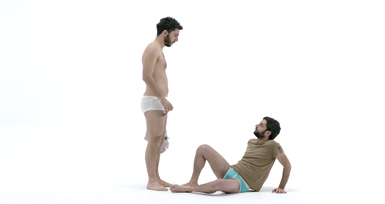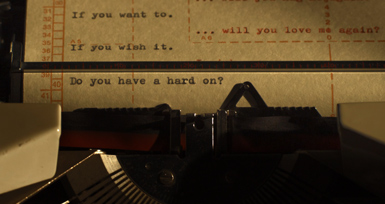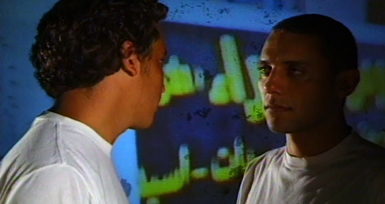Akram Zaatari has produced more than forty videos, a dozen books, and countless installations of photographic material, all pursuing a range of interconnected themes, subjects, and practices related to excavation, political resistance, the lives of former left-wing militants, intimacies among men, the circulation of images in times of war. Zaatari has played a critical role in developing the formal, intellectual, and institutional infrastructure of Beirut’s contemporary art scene. He was one of a handful of young artists who emerged from the short-lived era of experimentation in Lebanon’s television industry, which was radically reorganized after the country’s civil war. As a co-founder of the Arab Image Foundation, a groundbreaking, artist-driven organization devoted to the research and study of photography in the region, he has made invaluable and uncompromising contributions to the wider discourse on preservation and archival practice. Zaatari has been focusing since 2004 on studying the archive of studio Shehrazade, which was founded by photographer Hashem el Madani. Zaatari represented Lebanon at the Venice biennale 2013, and has taken part of Documenta 13 (2012), the Istanbul Biennial (2011), and the Sao Paulo biennial (2006). His works are in the collections of Tate Modern, Centre Pompidou, MoMA, and MCA Chicago. He lives and works out of Beirut, Lebanon.
Working with a collection of photographs of children taken from the 1940s through the 1970s, Zaatari proposes to friends to recreate some of the poses of the boys and girls portrayed. The results are shown in a sequence of twelve projections featuring adults motionless in front of the camera, as though the latter had captured the seconds that precede the triggering of its shutter. The images evince urban and behavioral changes that took place in some Arab countries over the last few decades, as pertains to gender performance, and the boundaries between childhood and adulthood. The installation is part of Akram Zaatari’s wide-ranging research into visual memory in Arab countries, and was based on the collection amassed by the Arab Image Foundation.
A compilation of edited Youtube videos uploaded by young men from several Arab countries who film themselves. Footage from Egypt, Saudi Arabia, Palestine, the United Arab Emirates, Yemen, and Libya are divided by themes, features teenagers and young men showing off in videos relating to bodybuilding, car stunts, dancing, music, or emulations of video game characters, with fragments that reveal, more than anything else, the fragility of their authors and their relaxed moments. It also portrays the self-image of part of the Arab youth in the first decade of the 21st century: their shows of emotion and affection, the ways in which they symbolized the conflicts and reacted to the struggles of our era. The piece was created for The Uneasy Subject, a show held at the MUSAC, in Spain, and is dedicated to the French poet and writer Liliane Giraudon.
This four-part piece follows two young men living between the walls of an unfinished building. The abandoned construction site becomes their makeshift home. Oblivious to the city, the pair spend their days without ever speaking to each other, communicating only through their smartphones, and perambulating around the place. They act as if they inhabit their own suspended time, waiting for some external event to get them out of there. Commissioned by the 10th Gwangju Bienniale, the piece explores space through sophisticated camera movements, hovering over the concrete blocks and unfinished walls. Shot in downtown Beirut, the video is set against the backdrop of an actual area of the Lebanese capital that is more like a city destroyed, torn to pieces.
Dividido em quatro partes, acompanha dois jovens que vivem entre muros de uma construção incompleta. Essa espécie de canteiro de obras abandonado é transformada por eles em um lar improvisado. Alheios à cidade, os dois jovens passam os dias sem se falar, comunicando-se apenas por seus smartphones e perambulando pelos fragmentos da construção. Agem como se habitassem um tempo suspenso, próprio, à espera de um evento externo que os tirasse dali. Comissionada pela 10ª Bienal de Gwangju, a obra explora o espaço através de sofisticados movimentos de câmera, que transitam entre os blocos de concreto e paredes por terminar. Realizado no centro de Beirute, a obra tem como cenário uma região real da capital libanesa, que mais se assemelha a uma cidade destruída, partida em fragmentos.
This piece shows a fragment of speech from a love story that involves longing and hope. The story unfolds through an intense exchange of messages, taunts, and suggestive notes between two ex-lovers who get back in touch after a hiatus of over ten years. The messages reveal an attempt at seduction as one seeks to lure the other into meeting again. Despite the fear, both their speeches convey the urgency that betrays the desire to see one another again. The image of the sunset at the end of the piece, and the date date written in camcorder – December 31, 1999 – heralds the coming of a new age that echoes the title’s promise: forget your tears, tomorrow everything will be alright. The video features references to Egyptian cinema and is dedicated to the French filmmaker Éric Rohmer.
Formatted as a letter, this video reflects on the production of images and their relationship with memory, but also on the end of a relationship between two men. It evokes events that took place in 1985, during the civil war, recreating the stroll that led to the couple’s breakup. The short-lived sweetness of a bubblegum works as a metaphor for the relationship and for passion, both of which lose their form and taste quickly. The breakup story unfolds against the backdrop of the mutating urban landscape of Hamra, a Beirut street that used to be the intellectual heart of the city before the civil war broke out. The video was made as part of the Hamra Street Project, curated by Ashkal Alwan (the Lebanese Association for Plastic Arts) to reflect on the rise and fall of the famous boulevard, eclipsed at the turn of the century by the development of other parts of the city.
